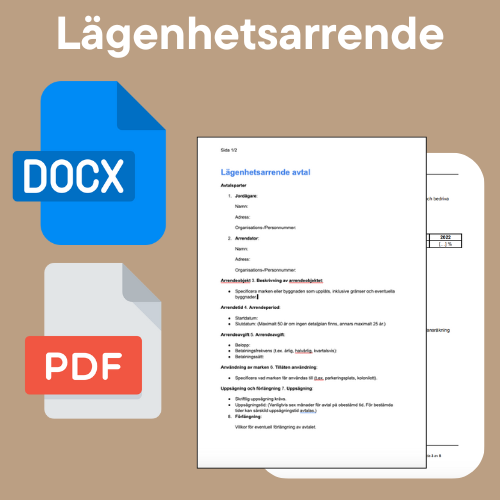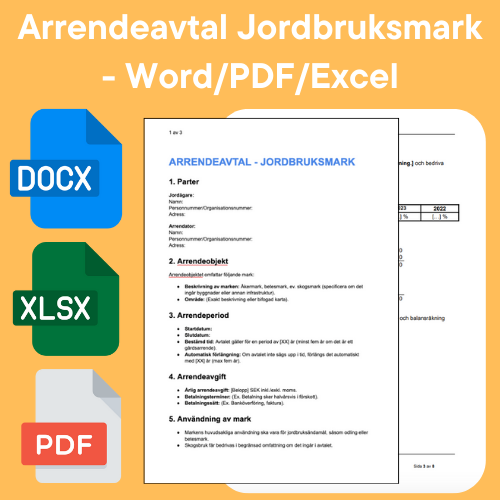Lease Accounting with Examples
Share
Lease Accounting with Examples
Table of contents
Introduction
A lease is a grant of land or land against payment, and there are several types of leases regulated by Swedish law. Correctly recording lease costs is important to ensure that the company's finances are in order and comply with applicable laws and regulations. This article will provide an in-depth overview of leases, including accounting examples, legal requirements, common mistakes, and real-life examples of legal disputes.
Types of Lease
According to the Land Code, there are four main types of lease:
- Agricultural lease: The lessee uses the land for agricultural purposes.
- Residential lease: The lessee has the right to build or use a residential building on the land.
- Facility lease: The land is used for commercial purposes, such as industrial buildings or businesses.
- Apartment lease: The land is used for other purposes, such as e.g. parking lots or campsites.
Legal Requirements and Obligations
For a lease to be valid, it must be in writing and contain all relevant terms, including:
- Names and contact details of the parties
- Type of lease
- The size of the leased area
- Area of use
- Lease fee
- Lease period and notice period
It is important that all changes and additions to the agreement are in writing. Tenants often have protection of tenure, especially in residential and agricultural leases, which means they cannot be terminated without valid reason and are entitled to compensation on termination.
Accounting of Lease costs
When it comes to accounting for lease costs, there are some important principles to follow:
- Classification: Lease costs are normally classified as other external costs and are booked under account group 51 - Property costs.
- Accruals: If the lease spans multiple periods, the cost should be accruals to accurately match revenues and expenses over time.
- VAT handling: For certain types of leases, such as agricultural leases, the rental is subject to VAT. It is important to report input VAT correctly.
Example of Accounting
Here is an example of how to book a lease expense:
On receipt of invoice:
Debit: 5010 (Lease costs) SEK 10,000 Credit: 2440 (Supplier debts) SEK 10,000
When paying an invoice:
Debit: 2440 (Supplier debts) SEK 10,000 Credit: 1930 (Bank account) SEK 10,000
Periodization of the cost (if the cost relates to several periods):
Debit: 1790 (Prepaid costs) SEK 5,000 Credit: 5010 (Lease costs) SEK 5,000
Common Mistakes in Lease Bookkeeping
- Incorrect accruals: Not accruing expenses correctly can lead to incorrect results and tax consequences.
- Missed VAT handling: Failure to correctly report VAT on leases subject to VAT can lead to penalties from the Swedish Tax Agency.
- Incomplete contracts: Contracts that do not cover all necessary terms can lead to disputes and financial losses.
Legal Disputes
Disputes over leases are not uncommon and can arise for a number of reasons, including disagreements over payments, use of the land or terms of the agreement. Examples of legal cases include:
- Security of tenure dispute: A tenant with a residential lease refused to vacate the land after the lease expired, leading to a dispute in the Tenancy Board.
- Wrongful Termination: A landowner who terminated a lease without following the statutory notice periods, leading to claims for damages by the lessee.
Conclusion
Understanding and properly managing lease accounting is critical to avoiding financial and legal problems. By following the basic principles of bookkeeping, ensuring that all agreements are in writing and comprehensive, and being aware of legal obligations and rights, both landowners and tenants can avoid common mistakes and disputes




